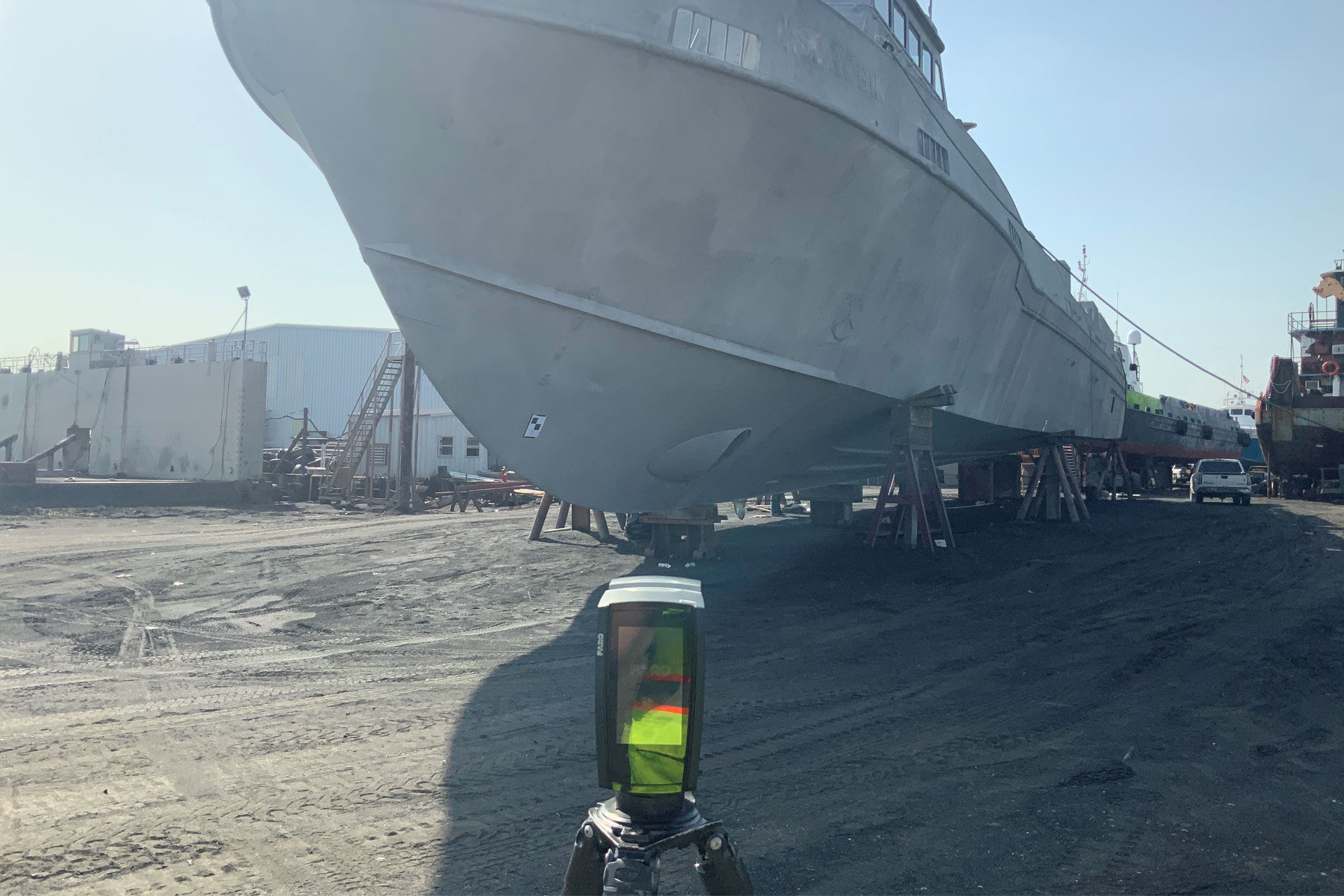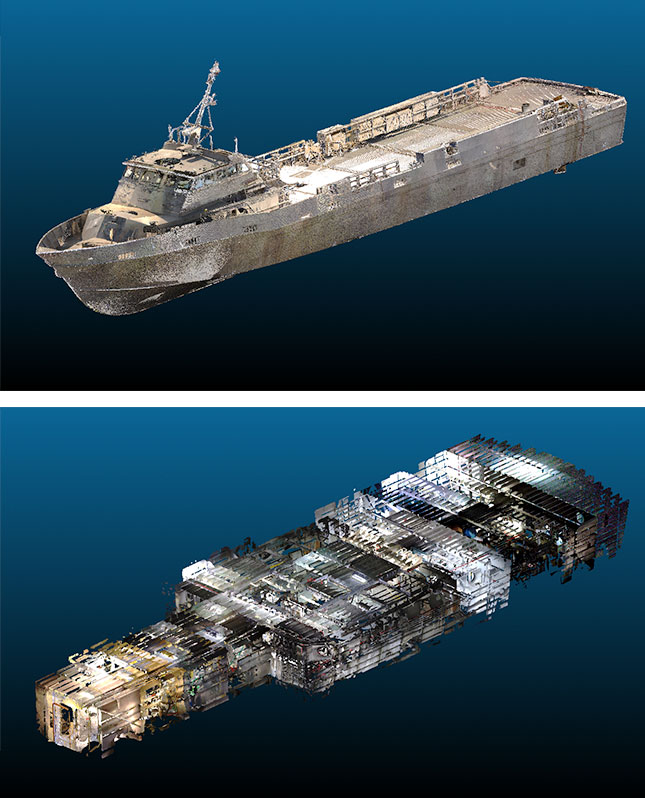
Laser Scanning
At Baker Marine Solutions, we harness the power of laser scanning or LiDAR technology to revolutionize the marine industry. With its highly accurate measurements and intricate 3D mapping capabilities, we can efficiently map vast areas and complex structures.
At Baker Marine Solutions, we are redefining the maritime frontier. Our seasoned team of engineers and naval architects merges experience with cutting-edge digital tools, ensuring that every project embodies excellence and innovation.
Laser scanning, also known as LiDAR (Light Detection and Ranging), is a cutting-edge technology that captures the world around us in three dimensions. This process works by emitting laser beams towards a target area or object. These beams then bounce back to the scanner upon hitting different surfaces. By measuring the time it takes for each beam to return, the scanner calculates the distance to each point, forming a detailed 3D map of the environment. This collection of points is commonly referred to as a "point cloud". What sets laser scanning apart is its precision, enabling it to capture minute details from significant distances.
The precision and versatility of laser scanning have made it an invaluable tool in the marine industry, particularly for companies like Baker Marine Solutions. Known for its ability to map vast areas and complex structures, laser scanning can accurately capture the intricate details of In risk mitigation services, the detailed 3D models generated through laser scanning can provide a comprehensive view of potential risks, allowing for more effective strategies to mitigate them. So, in the marine industry, laser scanning isn't just about creating accurate 3D models—it's about enabling safer, more efficient operations.
Laser scanning does more than just creating accurate 3D models; it also allows for the simulation of future scenarios. It provides a safe and cost-effective platform for planning changes and testing various situations before their real-life implementation. Furthermore, it can detect potential issues early on, preventing damage before it occurs. In summary, laser scanning bridges the gap between the physical and digital realms, enabling proactive decision making and planning.

